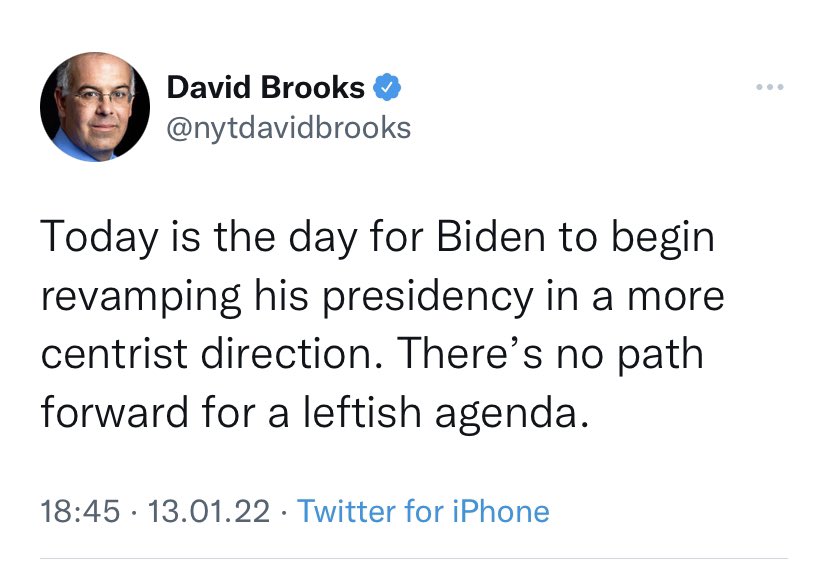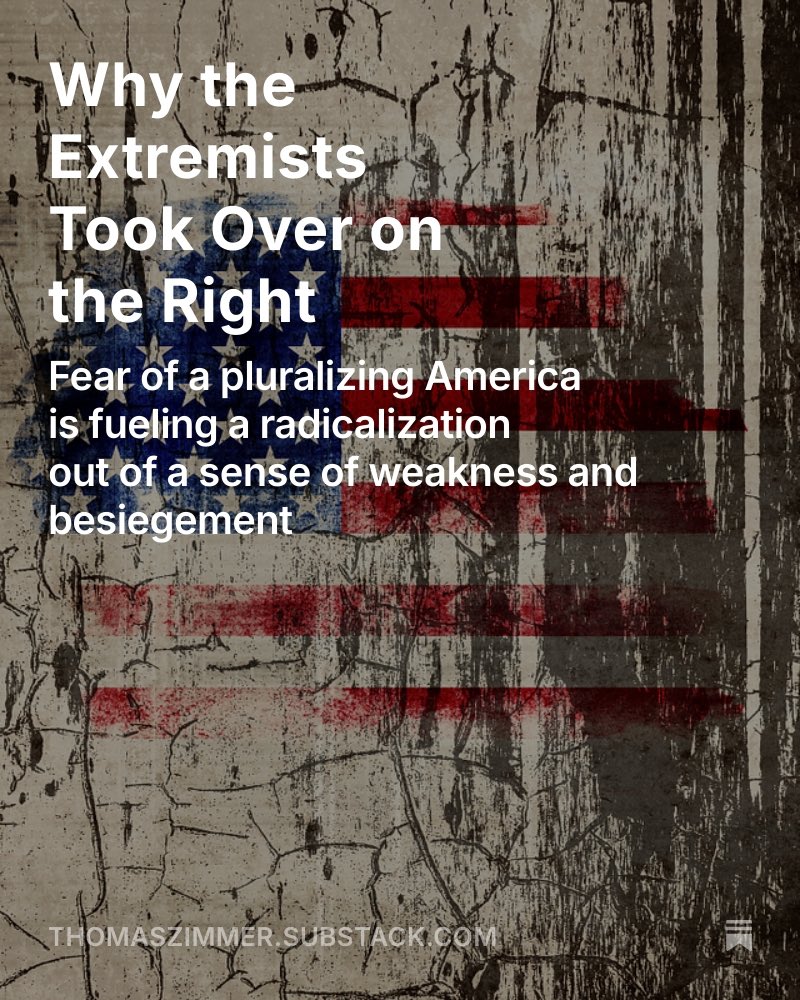The fever dream of reactionary centrism: A center-right re-alignment of American politics, all in the name of defending democracy against Trump - while also upholding the traditional order against the forces of multiracial pluralism. Wow. 

In this vision, Trump and the excesses of militant Trumpism are excluded from the “respectable” spectrum of American politics – but so are all the “radical Leftists” like Bernie Sanders, and all those “woke” activists and crazy “critical race theorists.”
The desired result is a new normal that not only glorifies the status quo, but actually restores a more secure white elite dominance. With the exception of Big Lie-inspired election subversion, Cheney does not seem to have a problem with the GOP’s other undemocratic tools.
Cheney has demonstrated no desire to protect voting rights against the hundreds of voter suppression bills introduced by Republicans on the state level since the last election, or to outlaw the type of aggressive partisan gerrymandering that is being pursued in GOP-led states.
While being celebrated as an alliance against authoritarianism, what such calls for a Biden/Cheney ticket represent is a desire for a less democracy – or, to be more specific: for a more restricted version of democracy that keeps the forces of multiracial pluralism in check.
For the record: I’ve seen several people use the term “reactionary centrism” (which is good, because it’s an incredibly apt concept) - but the clearest, most insightful dissection I have encountered comes from @RottenInDenmark - full credit to Michael Hobbes.
Reactionary centrism, David Brooks edition.
“Centrism”: Anything that allows people like Brooks - a mostly wealthy, white, male elite of self-proclaimed moderates - to decide what is / is not acceptable.
“Leftish agenda”: Anything that deviates from status quo-fundamentalism.
“Centrism”: Anything that allows people like Brooks - a mostly wealthy, white, male elite of self-proclaimed moderates - to decide what is / is not acceptable.
“Leftish agenda”: Anything that deviates from status quo-fundamentalism.

Ah yes, Biden went too far with his “leftish agenda” when he pushed his socialist program through via Reconciliation, then ruthlessly abolished the filibuster to pass voting rights legislation and democratizing reforms, then… wait… that can’t be right… 

Ok, now I got it: Biden went too far with his “leftish agenda” when he went hard after everyone responsible for January 6, then dramatically raised taxes for billionaires, then fully endorsed the teaching of CRT at elementary school, then… wait… that’s not it either? 

Alright, let me try again: Biden went too far with his “leftish agenda” when he single-handedly opened all borders, then signed the Green New Deal into law while also outlawing cars, effective immediately, then abolished Christmas, then… uhm… 

Well, anyway: A more “centrist” direction is urgently needed!
Biden/Cheney 2024! To save “democracy,” of course.

Biden/Cheney 2024! To save “democracy,” of course.


You have to admire how lazy the term “leftish agenda” is. “Leftish”: a lot broader than just “left,” so deliciously vague. “I’m not gonna define it or be specific… Don’t even bother asking what is ‘left’ about it. You know what I mean, the stuff we don’t like. Leftish!” Perfect. 

These “centrist” confessions would be revealing under any circumstance; in the context of a now-or-never struggle to protect democracy, with Biden finally and forcefully intervening to get voting rights legislation passed, the reactionary ideology could not be more obvious. 



These “centrist” pleas always entail a barely veiled threat: “If you don’t break with these woke radicals and their ‘leftish’ agenda, you leave us no choice - be reasonable or we’ll have to vote for the other team!”
The eternal permission structure of the reactionary centrist.

The eternal permission structure of the reactionary centrist.


• • •
Missing some Tweet in this thread? You can try to
force a refresh






